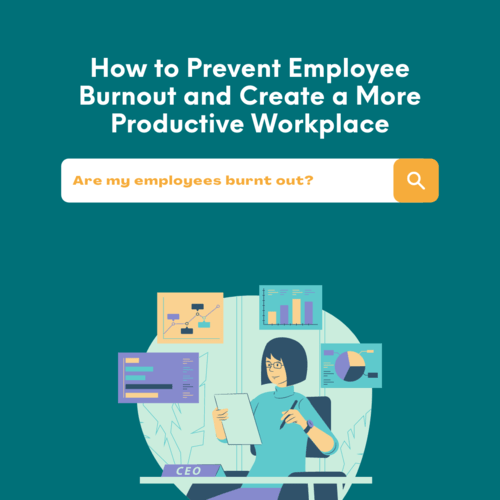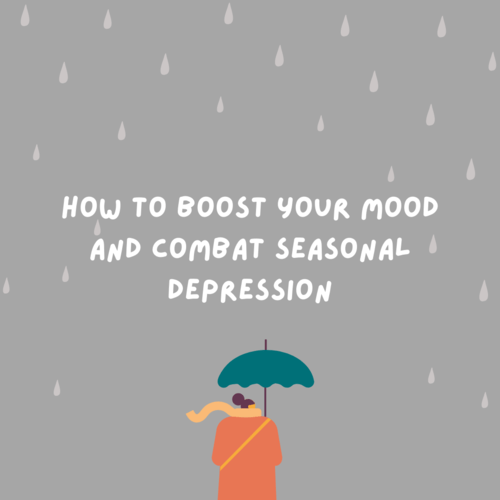Burnout is a real issue in the workplace, with many workers being continuously stressed with work demands. Employers play a crucial role in curbing the systemic factors responsible for workplace stress.
Many managers may be underestimating the burden and risks of burnout in their organizations.
A recent study found that 77% of workers reported experiencing burnout at their current workplaces, even among employers who truly loved what they do.
WHAT IS WORKPLACE BURNOUT?
Burnout is a spectrum of physical and emotional signs of exhaustion and stress, which occurs when the demands of work are greater than the capabilities of and resources available to workers. A number of workplace risk factors set the stage for this: excess work demands, dysfunctional workplace dynamics, poor employee support, poor work-life balance, and lack of control at work. These factors create an atmosphere that breeds employee burnout.
Employee burnout is a serious topic today because of its impact on the mental and physical health of employees, which in turn, stifles workers’ performance and leads to an overall decline in productivity. This is the vicious cycle it creates for any organization.
What’s more? Job burnout costs organizations high employee turnover, making them lose their most competent hands to competitors, further crippling the business.
HOW TO RECOGNIZE SIGNS AND SYMPTOMS
The majority of employees experiencing burnout will remain at work. Being aware of changes in attitudes and energy can help with early identification. Employees may not realize that they are dealing with burnout and may instead believe that they are just struggling to keep up during stressful times. Stress, however, is usually experienced as feeling anxious and having a sense of urgency while burnout is more commonly experienced as helplessness, hopelessness, or apathy.
Employees may not be aware of the negative impacts on their performance that this can have, such as increased errors or lower productivity. Employers and co-workers may attribute the changes to a poor attitude or loss of motivation. The negative effects of burnout can increase significantly before anyone recognizes or addresses the problem and unaddressed burnout can increase the chance of developing clinical depression or other serious conditions.
Some of the signs and symptoms that an employee experiencing burnout may exhibit include:
- Lack of interest or enthusiasm
- Moving slower than normal
- Disinterest in conversation
- Disengagement
- Exhibiting a negative attitude
- Frequent tardiness or absences
- Decline in productivity
- Producing lower quality work
Noticing and taking steps to mitigate employee burnout is an important practice for businesses. Burnout can happen to anyone, including supervisors and those in upper management. Employers who ignore burnout often encounter unusually high job dissatisfaction and employee turnover rates.
You may also find that employee burnout can cause long-term losses. Burned-out employees are more likely to take PTO and call in sick during busy workweeks. They’re also often looking for other jobs and may resign with little to no notice. That means learning to handle employee burnout effectively can save you time, money and mental strain.
PREVENTION STRATEGIES
What steps, then, can employers take to reverse this trend and keep their employees engaged and working at peak performance? Here are a few ideas.
ENCOURAGE TIME OFF
Taking vacation time is an important tool in preventing burnout. Managers should gently remind employees that they are free to take time off and that the company encourages it, to unplug and recharge. Make sure your teams are aware and able to shift workloads and responsibilities efficiently when colleagues take time off.
MAKE TOOLS AND RESOURCES AVAILABLE
Providing tools that promote wellness and self-care is one step in mitigating factors of burnout. Offering resources, such as free subscriptions to health and wellness apps, Employee Assistance Programs (EAP), and conversational AI like chatbots and digital assistants, can be combined and offer 24/7 support to the workforce.
PRESENT FLEXIBLE WORKING ARRANGEMENTS
Finding ways to give employees the flexibility needed to complete their work without the traditional parameters helps employees. This includes offering extra paid time off, flexible work hours, and supporting employees that are caretakers and guardians with daycare arrangements.
DEPLOY WELL-BEING AND RESILIENCE TRAINING AND BENEFITS
Making sure your workforce knows there are wellness programs available to support – such as fitness classes, ergonomics, diet advice, and general counseling is an important step. Hosting workshops and offering training addressing the new ways people work can help employees process change and avoid factors that lead to burnout.
INCREASE COMMUNICATION AND CONNECTION
Encouraging employees to stay connected and providing creative ways via various learning and communication channels helps the workforce feel engaged. Offering virtual happy hours and coffee breaks to remind the workforce they are part of a community can be a tremendous tool for preventing burnout and increasing connection.
ENLIST MANAGERS’ AND LEADERS’ SUPPORT
Recommending senior leadership share messages emphasizing the importance of mental health and wellbeing and asking managers to be flexible regarding work schedules is key. Removing the stigma around burnout and advocating for EAP can offer the workforce support they didn’t know existed or that they needed.
RECOGNIZE CONTRIBUTIONS
Recognizing those who are contributing to the success of the organization, providing motivational videos, sharing messages of support, and offering praise are all collaborative ways to keep the workforce engaged. Encouraging expressions of gratitude and appreciation both internally and externally counteracts the risk factors for burnout
SET BOUNDARIES TO BALANCE BETWEEN WORK AND HOME
Creating and respecting boundaries for a work and life balance must be considered when reviewing the risk factors for burnout. Prioritizing and encouraging a focus on health, safety, and family across the organization and providing updates on all circumstances impacting the workforce will help build trust and remove risks of burnout.
REDISTRIBUTE OR REPRIORITIZE WORK
Offering flexibility around when work is completed, reprioritizing the work that is ‘must-do’ versus ‘nice to do’ and scheduling career growth conversations around goals and learning paths, some that may have drastically changed, will help employees feel supported – critical to reducing fear factors leading to burnout.
REACH OUT AND LISTEN
Checking-in with remote workers, and employees who have returned to an in-person role, is the simplest way to let the workforce know they are supported and prevent symptoms of burnout. Asking questions and offering tools to support – whether it is through an internal survey, a wellness chatbot, or a therapist offered in an EAP – share that the environment at work is safe, and that employees are heard. Then listen and respond.
STRUCTURE AND BALANCE MEETINGS
Remaining open to new ways of work and providing options for flexible working structures helps employees feel supported. Creating a schedule and inviting employees to build one that best fits their current work structure and time constraints provides employees with a sense of empowerment and support that reduces burnout risk factors and promotes wellness.
Using these tips for addressing burnout and taking actions to mitigate the risks will help keep your workforce engaged even in tough and unpredictable times. In addition, creating a supportive community based on communication and connection will position your organization to thrive now and in the future. Burnout awareness and prevention is vital to keeping employees healthy and productive, and for continued business success.



